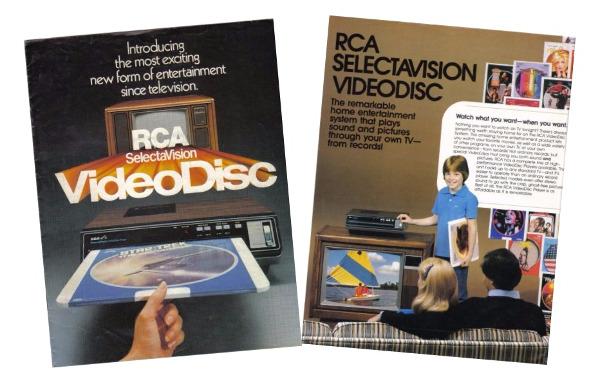Flashback 1981: RCA Unveils the CED Videodisc Player

But the SFT100 SelectaVision VideoDisc player, released at the height of the Beta vs. VHS videotape wars, was too little, too late—even though it offered better picture quality. In fact, the format was obsolete the day it hit stores, despite RCA having spent $200 million over 15 years developing it.
Unlike the LaserDisc players introduced by Philips/Magnavox and Pioneer a few years earlier—which were used laser-read optical discs that would later be adapted for the CD format—RCA’s CED (Capacitance Electronic Disc) system used a turntable-like diamond stylus to extract audio and video signals from grooves in the disc.
New York magazine’s Michael Schrage wrote: “A number of people expect the result to be like the Manhattan Project—a bomb. The reason is the technology. SelectaVision is a “grooved capacitance” technology, and that pretty much relegates it to the Jurassic era in terms of state of the art.”
The SFT100 player was priced at $499.95 and CED videodiscs cost between $14.98 and $39.98, with most selling for less than $20. The discs were housed in a protective “caddy” and stored up to 60 minutes of video, which meant two discs were required for a feature-length movie (hence, the $40 price point).
Within months, it was clear that the RCA system was doomed, having sold only 100,000 players by the end of 1981. CED players were also made by Hitachi, Sanyo, and Toshiba and marketed under 11 brand names, including JC Penney, Realistic, Sears, and Zenith.
The CED videodisc system limped along until 1984, when RCA finally pulled the plug on the format. Cumulative sales for the first three years were around 550,000. When all was said and done, RCA lost upwards of $600 million on the project.
For more on the RCA SelectaVision VideoDisc system, visit stason.org, a FAQ compiled by Tom Howe.























































